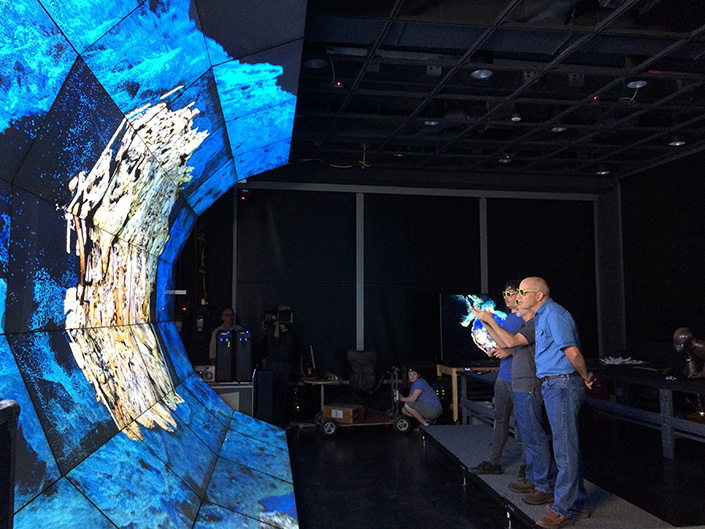UNESCO Recognizes International Team for Sustainable Underwater Archaeology Efforts
Published Date
Story by:
Share This:
Article Content
The United Nations Educational, Scientific and Cultural Organization (UNESCO) has awarded a team of researchers from Mexico’s National Institute of Anthropology and History (INAH) and UC San Diego’s Qualcomm Institute (QI) and Scripps Institution of Oceanography for their efforts protecting underwater cultural heritage sites.
UNESCO presented the team with a “Best Practices of Underwater Cultural Heritage” distinction for archaeological work on the Yucatán Peninsula. The award, which recognizes efforts to share underwater cultural heritage sites while preserving their natural state, was delivered at the ninth meeting of UNESCO’s States Parties to the 2001 Convention in Paris, France in June.
Under INAH’s guidance, the team has taken a proactive and minimally invasive approach to documenting, sharing and digitally preserving Hoyo Negro (“Black Hole”), an underwater cave home to dozens of prehistoric animal bones and the skeleton of a teenage girl who lived and died thousands of years ago.
“Digitally documenting the numerous bone deposits and their surrounding contexts enables us to access the entire site virtually and assess the complex spatial relationships between skeletal elements. Interactive visualization can reveal clues about how the site formed or how the animals and a human individual came to rest on the cave floor,” said Dominique Rissolo, a research scientist with QI’s Cultural Heritage Engineering Initiative and co-leader of the Scripps Center for Marine Archaeology (SCMA) alongside Isabel Rivera-Collazo and Christian McDonald, also on the Hoyo Negro team.

“To place this in context, very few projects have received this recognition by the UNESCO Meeting of the Parties,” said Rivera-Collazo, a professor in biological, ecological and human adaptation to climate change and director of SCMA. “This project is an example of what underwater archaeology can do.”
INAH’s Helena Barba Meinecke is working with researchers from UC San Diego and its partners to analyze partially fossilized bones left by ancient animals. Their goal is to better understand how the Yucatán’s fauna, climate and landscape have changed since the last Ice Age. The cave also has the distinction of being the original resting place of Naia, a young woman whose bones, including a nearly complete pelvis and a single set of complete arm and leg bones, have revealed information about her health, history and physical appearance.
Using underwater photogrammetry techniques on-site and 3D scanning technologies in the lab, QI researchers have digitally recreated Hoyo Negro in stark detail, from its stalagmites to the bones that rested on its floor. This “digital twin” of the underground cenote, a natural sinkhole filled with freshwater, has offered an interactive record that scientists have used to plan out future dives, including an expedition to retrieve fossilized animal remains for study by collaborating paleontologists and archaeologists.
During the June meeting, UNESCO officials also invited SCMA to apply to become a member of the UNESCO UNITWIN Network for Underwater Archaeology. The network describes itself as seeking to increase capacity in participating countries through international cooperation; enhance the protection of and research into, underwater cultural heritage by connecting universities and professional training institutions working in the field of underwater archaeology; and act as a bridge between the academic world, civil society, local communities, research and policymakers.
“This makes us the third institution in all of the United States to join the network, and the first one on the West Coast,” said Rivera-Collazo. “With this opportunity, we join the top 34 universities in the world with a specialty in underwater archaeology recognized by UNESCO, and places us in a very privileged position to offer opportunities to our students, researchers and faculty and have a global impact.”
For more on the Hoyo Negro project, visit the website at https://hoyonegro.ucsd.edu/.
Share This:
You May Also Like
Stay in the Know
Keep up with all the latest from UC San Diego. Subscribe to the newsletter today.




